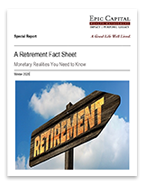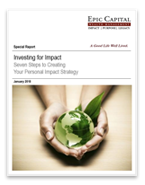Making Sense of Skyrocketing Jobless Claims
Mar 26, 2020
Weekly new jobless claims were reported this morning, and to no one’s surprise they rose to levels thought unimaginable just a few weeks ago. As shown in the LPL Chart of the Day, 3.3 million people filed new claims for unemployment benefits in the week ending March 21, almost 5 times the previous high of 695,000 set in 1982.
“The personal and economic disruptions represented by the latest new claims number are staggering,” said LPL Chief Investment Officer Burt White. “This is a genuine human crisis, and a robust response from the Federal Reserve and Congress seems appropriate. Unfortunately, we do expect more numbers like this in the coming months. At the same time, markets are forward looking and will be more focused on how quickly we might be able to get to the other side.” Per LPL’s Chart of the Day:
While the number of new claims is extraordinary, it’s not entirely unexpected. The United States and countries across the globe have shut down entire segments of their economies in an effort to delay or disrupt the impact of the COVID-19 pandemic. Many of the jobs most impacted by social-distancing measures, such as cashiers, restaurant workers, and hotel staff, are in the services sector, which now makes up about 80% of the jobs in the United States.
There is no silver lining in a number like this, but there is reason for hope. The US economy was not in a recession prior to the global spread of COVID-19. Workers are not being let go because of some structural fault in the economy or a financial crisis. As a result, when the slowdown ends, we may not see the extended hiring delay that has typically followed recessions. In fact, a surge in demand may require extra hiring, although it may not take place until people are fully confident that social distancing is no longer necessary.
Markets may not be responding to the dramatic numbers seen this morning, but they have been absorbing the rapidly changing economic expectations it represents over the last few weeks. We’ll see a lot of this over the next couple of months: historic numbers with markets seemingly unmoved. But it’s not because they’re indifferent. Economic data is slow moving and backward looking, while our economic reality has been changing at an unprecedented pace. Even new unemployment claims, which are released weekly, seem somewhat stale. Markets will still be reacting to shifting expectations of the depth and duration of the slowdown, as well as the effectiveness of policies to help businesses and workers get to the other side.
Tags: Current Events, financial advisor charlotte nc, Investing
More Insights
You know how important it is to plan for your retirement, but where do you begin? One of your first steps should be to estimate how much income you’ll need to fund your retirement. That’s not as easy as it sounds, because retirement planning is not an exact science. Your specific needs depend on your … Continue reading “Estimating Your Retirement Income Needs”
As June begins, markets continue to navigate a complex landscape shaped by trade policy shifts, an uncertain economic and earnings outlook, and bond market headwinds. Several key developments in recent weeks may have implications for markets:
April showers came a month early as stocks fell in March. Tariffs were the primary cause of the market jitters, although that uncertainty became too much for markets to shrug off once economic data started to weaken.
A successful investor maximizes gain and minimizes loss. Though there can be no guarantee that any investment strategy will be successful and all investing involves risk, including the possible loss of principal, here are six basic principles that may help you invest more successfully.
Losing a spouse is a stressful transition. And the added pressure of having to settle the estate and organize finances can be overwhelming. Fortunately, there are steps you can take to make dealing with these matters less difficult.
Services
Epic Capital provides the following comprehensive financial planning and investment management services: Learn More >



 Top of Page
Top of Page











